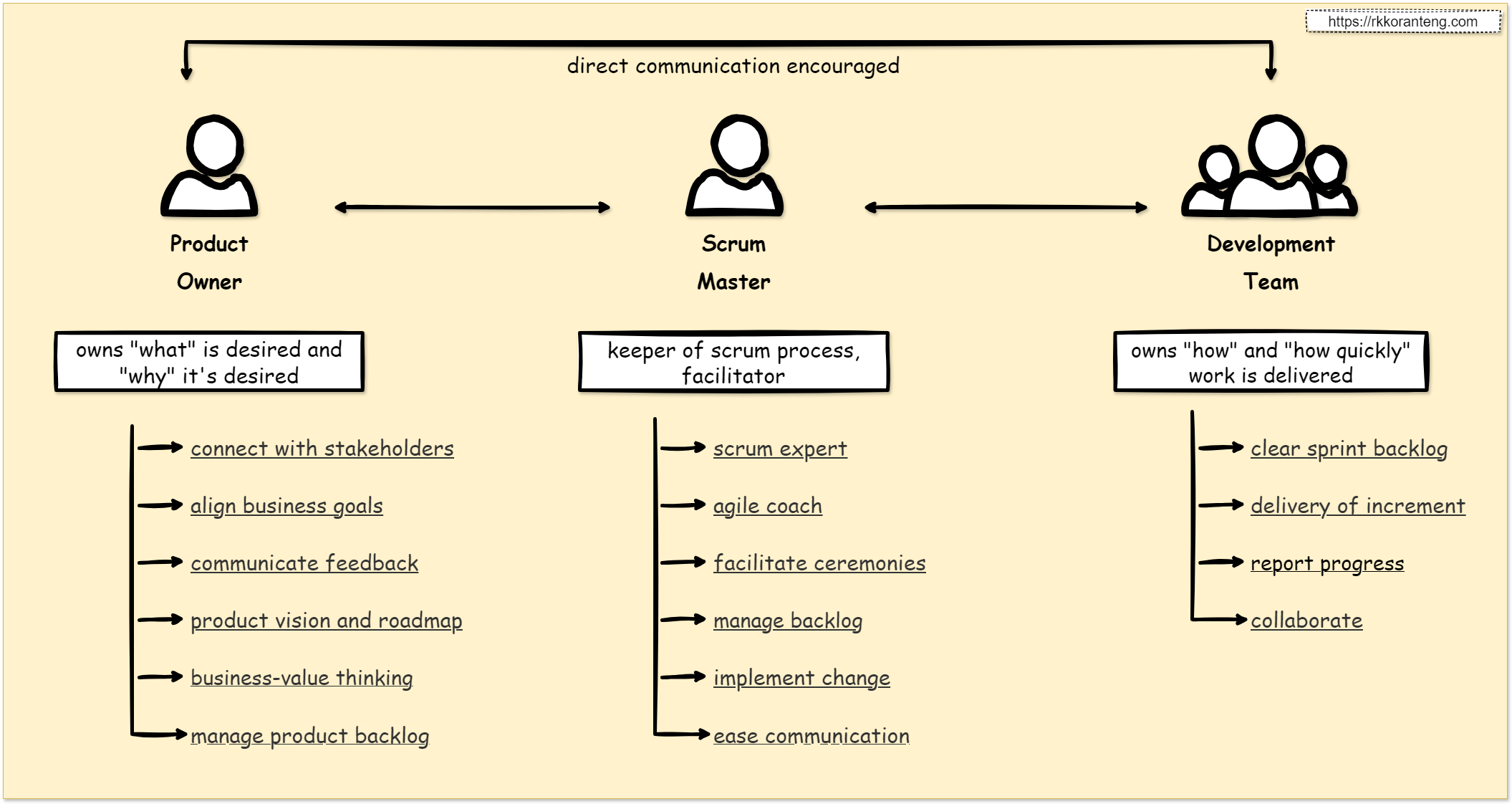Scrum - Roles & Responsibilities
A Scrum team is a small team of people using the Scrum principles to deliver a project. There’re generally three roles witin a scrum team; scrum master, product owner, development team. The three scrum roles describe the key responsibilities for those on the scrum team. They aren’t job titles; this means that any job title, even your existing ones, can perform one of the roles … for the most part.
1. Scrum master
The scrum master is someone who is an expert at using the scrum framework to deliver and manage projects. The scrum master role is a subset/type of project management role. Here’re some responsibilities of a scrum master:
- ✅ both a facilitator and coach who helps the team understand and apply scrum theory and practice
- ✅ helps teams work more effectively by skillfully removing obstacles and distractions that may impede the team from meeting goals
- ✅ facilitate meetings to plan work, track progress, and discuss lessons learned
2. Product owner
The product owner is someone who represents the interests of the business/customer. It’s the product owners job to tell the development team what (fetaures, bug fixes, etc) is important to deliver. Here’re some responsibilities of a product owner:
- ✅ prioritized list of work needed to deliver the product (backlog)
- ✅ manage the product release cycle and stakeholder expectations
3. Developement team
The development team includes the people that do the work. A common misconception is that the development team is full of engineers, but that’s not always the case. The development team can be comprised of all kinds of people including designers, database admins, sys admins, programmers, testers, etc.
